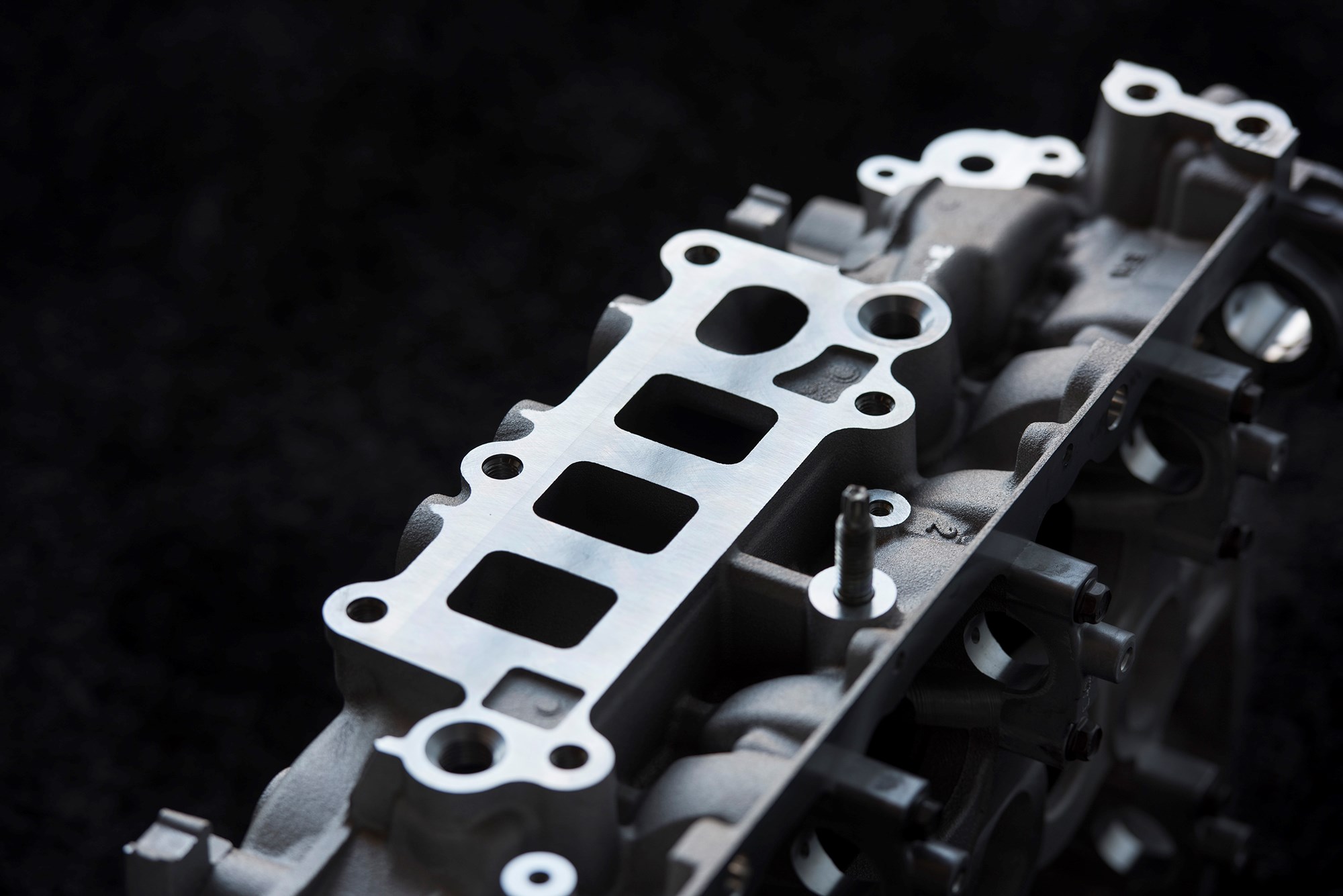A big part of the Mazda CX-9 story is found under the sculpted bonnet.
The new 2488cc SkyActiv-G 2.5T is a turbo-charged version of the direct injection petrol engine that powers Mazda3, Mazda6 and Mazda CX-5 models.
It debuts a system called Dynamic Pressure Turbocharging, which Mazda says is the world’s first turbocharger with the ability to vary the degree of exhaust pulsation depending on engine speed.
The system routes exhaust to the turbocharger’s turbine through smaller ports at low rpm — effectively like placing a thumb on a garden hose to create an increased amount of pressure through a smaller outlet. This allows the turbocharger to spool up quickly, creating an instant boost — up to 1.2 bar of pressure.
Mazda engineers say the Dynamic Pressure Turbo achieves a 20 to 25 per cent quicker response than a twin-scroll turbocharger at engine speeds below 1500rpm to produce a power delivery equivalent of a larger displacement, naturally aspirated engine.

As the engine revs climb further, the system opens up secondary valves, allowing for greater amounts of exhaust gas to pass through the turbocharger.
Further assisting turbocharger efficiency is a 4-3-1 exhaust layout. The exhaust from the middle two cylinders (2 and 3) are joined into a single port, while the exhausts from the outer cylinders (1 and 4) each have their own ports.
These three ports come together at the entrance to the turbocharger’s exhaust side, where there is always one exhaust pulse arriving every 180 degrees of crankshaft rotation. Not only does this very compact manifold keep the exhaust pulses separate for maximum energy extraction, it also harnesses each exhaust pulse to suck the residual exhaust from the adjacent ports.
Speeding up the exhaust gas flow has a similar effect to a variable geometry turbocharger, while a new cooled exhaust gas recirculation (EGR) system reduces cylinder temperatures and allows a high compression ratio.
The EGR system helps prevent burning excessive amounts of fuel when the engine is running at higher temperatures. In many turbocharged cars, heat is controlled through adding more fuel to the combustion chamber — called fuel enrichment.
Mazda’s cooled EGR reduces the need for that, lowering exhaust temperatures by as much as 100C with cooled air comprising as much as 15 per cent of the fuel mixture.
The new Mazda engine has a 10.5:1 compression ratio — among the highest of any turbocharged vehicles on sale — while the cooler exhaust gases improve the long-term durability of the catalytic converter.




